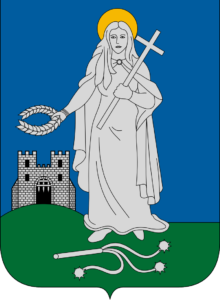Egerszeg, Zalaegerszeg

The palisade castle of Egerszeg is now in the city of Zalaegerszeg and it was destroyed and built in. You can see only the sites of the archeological excavations. The city is located in the southern part of Hungary. It was first mentioned in 1247 as “Egurscug”, then as “Egerszeg” in 1290 but the city had been founded a lot earlier. The Hungarian name stands for “alder-tree corner” and is probably a reference to the town’s situation at the angle where two rivers meet. Its landlord was the Bishop of Veszprém since 1266 and the bishops had the town fortified in Turkish times.

As Egerszeg lay somewhat distant from Veszprém, however, the taxes paid by the town often ended up in the pockets of such local oligarchs as the Kőszegi family. In the 14th century, Egerszeg was the largest town in the area. Between 1368 and 1389, it was a royal town for a short time, then King Zsigmond donated it to the Kanizsai family who traded it for another town with the bishop of Veszprém. Zalaegerszeg remained their property until 1848.

In 1381, the town built a stone church. In 1421, Egerszeg was granted oppidum status, which meant they could pay taxes once a year and the citizens could elect their own judge. The population grew quickly, and by the 16th century, Egerszeg became the de facto center of Zala comitatus (County).

In the 1530s, development was brought to a halt. Taking advantage of the power of the king being weakened, the owners of the surrounding lands attacked the town often, and the Ottomans already began to occupy Hungary after the Battle of Mohács in 1526. The Ottomans destroyed Nagykaporlak in 1566 so Egerszeg became a judicial center of the Kingdom of Hungary.

In 1568, the town was fortified, and a castle was built. The Ottomans attacked the town for the first time in the late 1570s, but they failed to capture it. When Kanizsa fell in 1600, Egerszeg became the most important fort defending Zala county at the River Zala as it opposed the castle of Kanizsa directly. The strategic importance of Egerszeg grew, but the castle was severely damaged in 1616. The citizens suffered not only from the war but from plagues and heavy taxes as well. The fort had more than 300 men guarding it in 1638.
The Ottomans besieged it in 1649 but due to the brilliant information system, the reinforcement arrived soon and the 500 Hussars of Captain Francsics István beat the enemy back. Unfortunately, the agricultural city of the fort accepted Ottoman rule and paid taxes to them; the fort was taken for a short time in 1664, too. It was liberated in 1690 and King Leopold I left the fort neglected in 1702. Now, you can see only the traces of the castle in the modern city.

Dear Readers, I can only make this content available through small donations or by selling my books or T-shirts:
Please, feel free to support me with a coffee here:
You can check out my books on Amazon or Draft2Digital, they are available in hardcover, paperback, or ebook:
https://www.amazon.com/dp/198020490X or at https://books2read.com/b/boYd81

My work can also be followed and supported on Patreon: Become a Patron!http://Become a Patron!

[wpedon id=”9140″]

https://hungarianottomanwars.myspreadshop.com/all




